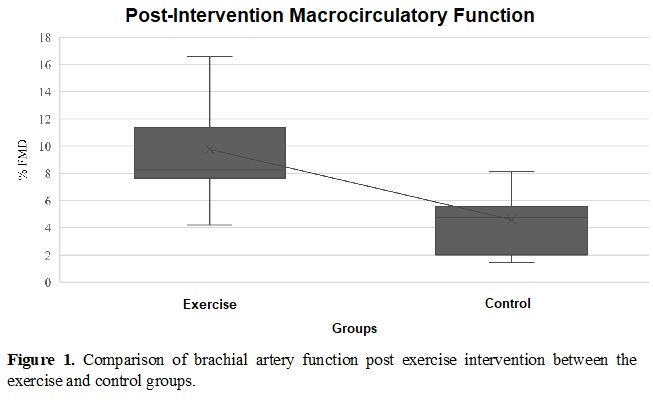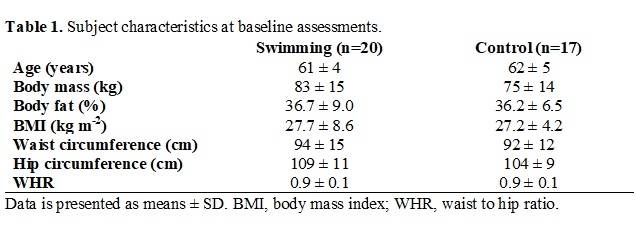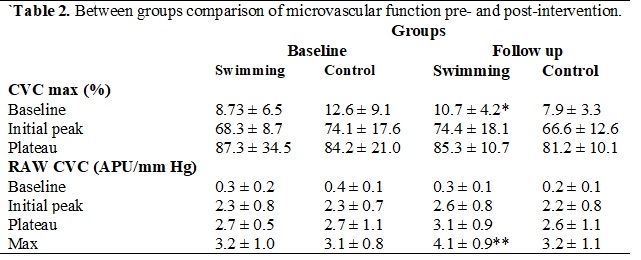Background: Cardiovascular disease (CVD) remains the number one death cause in the Western world, affecting also severely the quality of life (QoL) of those affected. Older people are of particular interest, as cardiovascular (CV) ageing affects pathophysiological pathways, which are also implicated in CVD development. Water-based, aerobic exercise such as swimming, may delay CV ageing, and consequently prevent the development of CVD in older adults.
Nevertheless, current literature presents conflicting evidence with some studies showing no improvement in CV parameters, while others suggest a positive effect on the intima-media thickness of carotid arteries, hemodynamic and biochemical markers. ACELA-II aimed to assess the micro- and macro-vascular function in older adults randomised to either regular (e.g., 2-3 times/week) swimming or no intervention for an 8-week period.
Methods: This was a single-centre, pragmatic, two-arm randomized controlled trial conducted in Sheffield, UK. The study was approved by the Ethics Committee of the Faculty of Health and Wellbeing of Sheffield Hallam University (ER5320861). Participants were invited at Sheffield Hallam University for two visits (i.e., baseline and 8-week follow up). Following baseline assessments, participants were randomised to either swimming (n=20) or control (n=17) groups. Assessments consisted of anthropometrics and demographics, smoking and clinical history, as well as micro- and macro-vascular function tests assessed by flow mediated dilation (using ultrasound) and laser Doppler flowmetry (using thermal hyperaemia), respectively. The swimming group followed an 8-week (2-3 sessions/week), self-managed exercise intervention, carried out in local public pools.
Results: Participant characteristics did not present any differences between groups both at baseline (Table 1) and follow up assessments. Following the exercise intervention, the exercise group significantly improved the macrovascular function (9.8 ± 4.2%, p<0.001) compared to the control group (4.6 ± 2.5%) as shown in Figure 1. Statistically significant differences were also found between groups comparison for the microvascular function as presented in both raw and the percentages of cutaneous vascular conductance (Table 2).
Conclusions: Regular swimming seems to benefit both the macro- and micro-vascular function in older adults when compared to no exercise (i.e., sedentary lifestyle). Considering that certain vascular parameters did not show a statistically-significant difference, rather a tendency towards improvement for the swimming group, it may be recommended that a longer (i.e., ≥ 12 weeks) intervention may offer great vascular health benefits.



